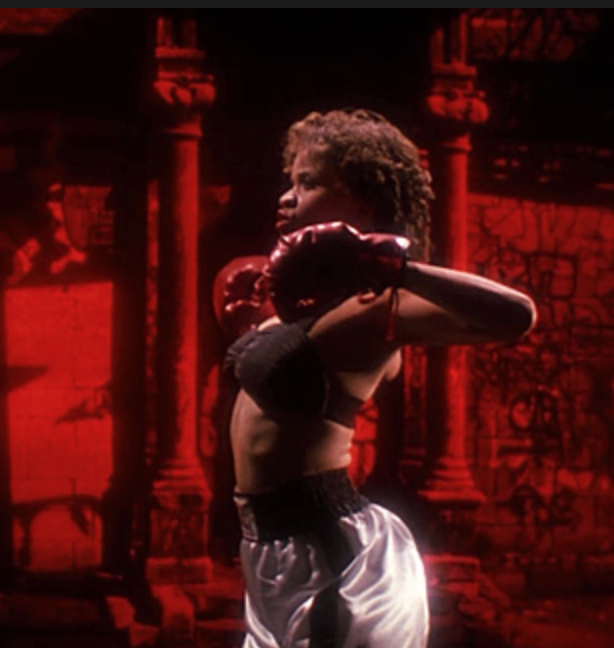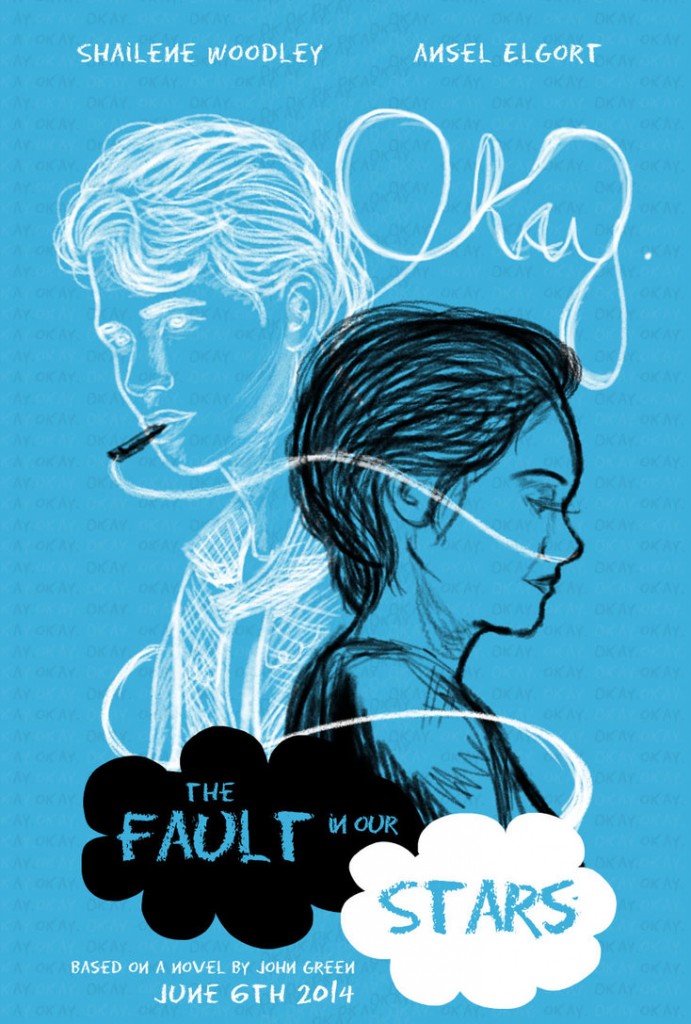The Meta Mea Culpa of ‘Venus in Fur’
 The following is a review originally published in Word and Film.
The following is a review originally published in Word and Film.
Handily, “Venus in Fur,” which is adapted from David Ives’ Tony Award-winning play, which in turn is adapted from Leopold Von Sacher-Masoch’s 1870 novella, is about adaptation itself. As if that were not bald enough, it is also a two-person film about a woman and a man worrying over a script on a bare stage. Yet this is Roman Polanski’s finest work in decades. It hones in on elements of horror lurking in ordinary human dynamics with a lurid specificity that the director has not evinced since the drama of his personal life eclipsed his professional life more than thirty years ago.
True, “Venus” treads familiar terrain for Polanksi, who has not returned to the United States since he fled the country in 1977 after pleading guilty to charges of raping a thirteen-year-old girl. It stars Mathieu Amalric – who, with his puckish features and light dusting of facial hair, bears an uncanny resemblance to the Polish-French director himself – as writer-director Thomas auditioning Vanda, a floozy actress played by Polanski’s real-life wife Emmanuelle Seigner, for his play about a sadomasochistic relationship. But Polanski seems to be tackling this familiar terrain from a new angle: “Venus” is a superbly crafted meta-mea culpa, a strange new cinema genre that may not be for the faint of heart (don’t try this at home, kids!) but nonetheless transfixes us for its entire ninety-six minutes. Continue Reading →
Boxing Day in the West Village
 I was having a Terrible, Horrible, No Good, Very Bad day so I went over to the gym and beat up the boxing bag. It took more than an hour but, eventually, whaling on an inanimate object restored my ability to glean something besides self-serving bullshit in myself and other human beings. Boxing is a solution I happened upon while working at Us Weekly. That place was like a pressure cooker containing all the second prettiest sorority girls–you know, the ones who compensated for their insecurities by terrorizing each other–and if I hadn’t worked out a healthy outlet for my rage I probably would have pulled out someone’s bad dye job (possibly mine) by the root. Or simply evaporated in a pool of abject misery. While working on my left hook this afternoon–no joke, I was blasting Public Enemy at the same time–it occurred to me that fewer women might suffer from eating disorders and depression if they just externalized the crap out of their anger like good ole red-blooded American men do. At the very least, everyone should experience the high of fucking something up every once in a while. The act of striking is a very specific pleasure. So let’s get get this party started right/ Fight the powers that be.
I was having a Terrible, Horrible, No Good, Very Bad day so I went over to the gym and beat up the boxing bag. It took more than an hour but, eventually, whaling on an inanimate object restored my ability to glean something besides self-serving bullshit in myself and other human beings. Boxing is a solution I happened upon while working at Us Weekly. That place was like a pressure cooker containing all the second prettiest sorority girls–you know, the ones who compensated for their insecurities by terrorizing each other–and if I hadn’t worked out a healthy outlet for my rage I probably would have pulled out someone’s bad dye job (possibly mine) by the root. Or simply evaporated in a pool of abject misery. While working on my left hook this afternoon–no joke, I was blasting Public Enemy at the same time–it occurred to me that fewer women might suffer from eating disorders and depression if they just externalized the crap out of their anger like good ole red-blooded American men do. At the very least, everyone should experience the high of fucking something up every once in a while. The act of striking is a very specific pleasure. So let’s get get this party started right/ Fight the powers that be.
The Stellar Success of ‘TFIOS’: Now What?
 The following is a report originally published in Word and Film.
The following is a report originally published in Word and Film.
As The Fault in Our Stars heads into its second weekend of release, it remains to be seen if it will emerge as one of the summer’s biggest blockbusters. Either way, though, it’s safe to say the adaptation of the popular young adult novel is a wild success. Pulling in nearly $50 million its opening weekend, it outstripped even optimistic box office predictions, not to mention The Edge of Tomorrow, the Tom Cruise sci-fi action movie that opened the same day. That’s right: This little weepie about two teens with cancer knocked a Tom Cruise movie out of first place at the box office. (Actually, the Angelina Jolie vehicle Maleficent also beat it out.) What’s more, “TFIOS” cost only $12 million to make, in contrast to the $175 million it cost to make “Edge.” And what’s even more, given its groundswell of support, “TFIOS” required a marketing budget of less than half of what movie studio 20th Century Fox usually spends to publicize a summer film. The profit margin is huge.
Granted, that’s a whole lot of business blather. But in Hollywood, money talks. And the big question now is whether the success of “TFIOS” will change what we can expect in the multiplexes in the years to come. As veteran Hollywood reporter Anne Thompson has observed, mid-range films — ones with budgets between $5 and 100 million — aren’t getting made anymore. (Annie Hall would have been made as an independent film today.) We’re all acquainted with what’s being produced instead: superhero and action movies galore. Sure, fantasy YA has already secured its position on the marquee; the massive success of such franchises as “Twilight,” “The Hunger Games,” and, most recently, “Divergent” has made sure of that. But given how much money “TFIOS” cleared, might big movie studios be ready to adapt other “grounded” (non-fantasy) YA novels? And — the mind reels — might it be ready to put more money behind grounded YA novels that star females? (Indiewire’s Inkoo Kang reports that, of the 100 highest-earning movies of 2013, movies with a female protagonist earned twenty percent more on average than movies with a male protagonist.) Continue Reading →
